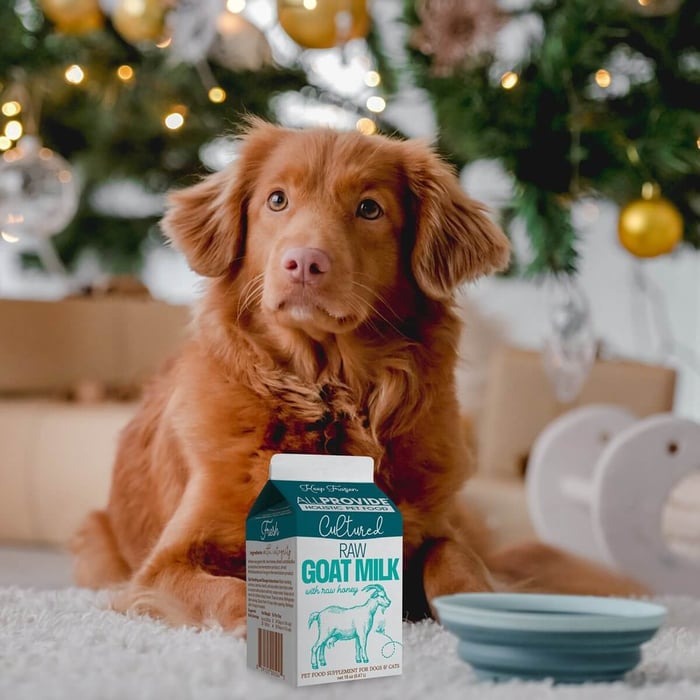Table of Contents
Behind the Label: What Your Pet’s Food Isn’t Telling You
Behind the Label: What Your Pet’s Food Isn’t Telling You. Reading pet food labels might seem straightforward, but here’s the truth: most pet parents are unknowingly misled by clever marketing, misrepresentative pictures, and confusing ingredient lists. Understanding what’s really inside your dog or cat’s food is essential for choosing a diet that supports long-term health, vitality, and longevity.
We’ll show you exactly how to read pet food labels, explain why the first five ingredients matter most, reveal the importance of the species-appropriate ratio percentages and types of diets, what to avoid, and help you spot deceptive tricks used by pet food brands. Whether you feed raw, gently cooked, or other diets, these insights empower you to make informed, healthier choices for your pet.
Why Ingredient Order Matters
Pet food ingredients are legally required to be listed in order of weight before cooking. This means the first few ingredients carry the most weight (literally) in the formulation. Unfortunately, many pet parents don’t realize that after cooking and moisture loss, meat-heavy foods might not be as protein-dense as they appear. Knowing this fact gives you the power to read any pet food label effectively.
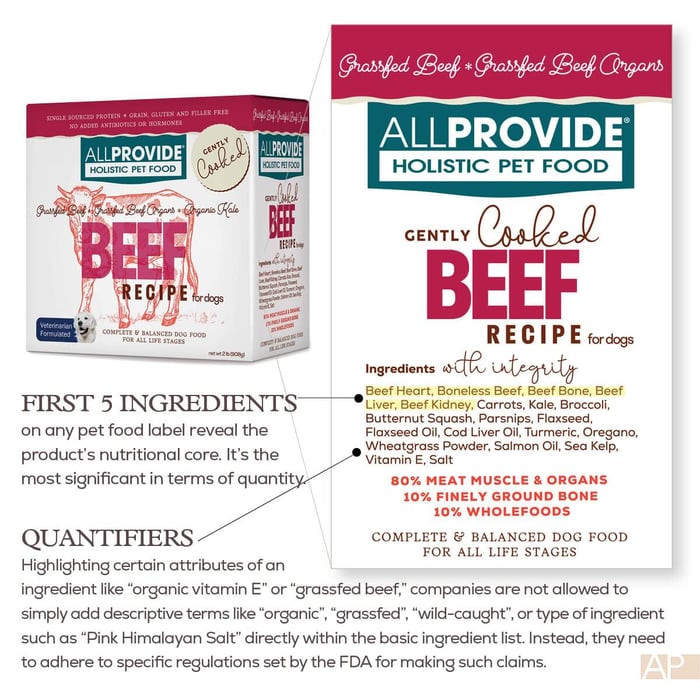 First 3 Ingredients: Where Transparency Begins
First 3 Ingredients: Where Transparency Begins
The first three ingredients on any pet food label reveal the product’s nutritional core. It’s the most significant in terms of quantity.
You should look for:
• Whole, named animal proteins such as “beef,” “chicken,” “turkey,” or “salmon.”
• Specific organs like “beef liver” or “chicken heart” (organs are nutrient powerhouses).
• Named bones, if included, as long as they’re species-specific (e.g., “beef bone”).
Avoid:
• Generic terms like “meat meal,” “poultry by-products,” “animal fat,” or “digest.” These vague, rendered products indicate poor-quality protein.
Remember: what’s named matters. Transparency is a hallmark of a trustworthy brand.
First 5 Ingredients: The Diet’s Foundation
The first five ingredients form the backbone of your pet’s diet. This is where you want to see a species-appropriate focus—not filler-heavy formulations. Dogs and cats are carnivores (cats are obligate, while dogs are facultative), which means their bodies thrive on high-protein, moisture-rich diets, rather than carb-heavy, filler-rich foods.
Avoid:
• Legumes, starches, and grains that dominate the top five. Ingredients like peas, lentils, oatmeal, chickpeas, potatoes, sweet potatoes, corn, soybeans, and rice are inexpensive fillers that dilute protein levels and add unnecessary carbohydrates.
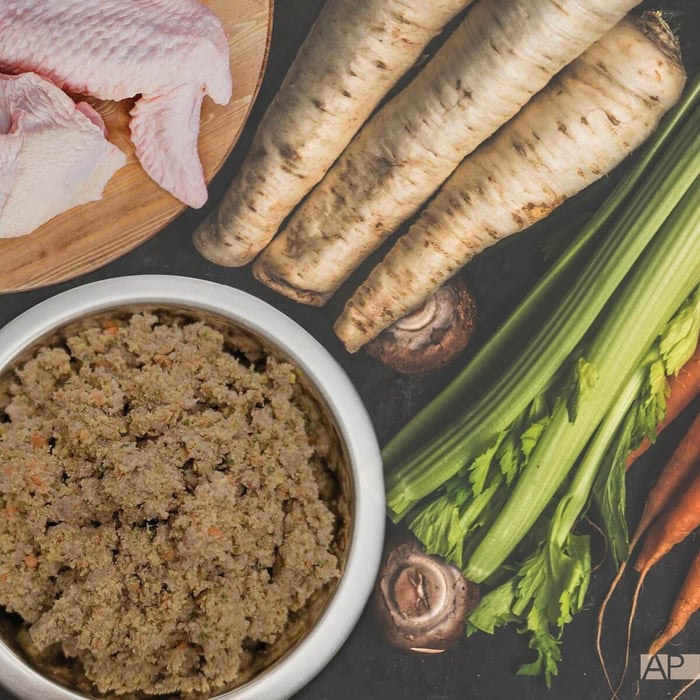
The Protein Ratio: Nature’s Blueprint for Health
Dogs and cats should be nourished with the food their bodies are designed by nature to thrive on.
There are three different types of ratio breakdowns in raw or gently cooked diets to look for: The Prey Model, B.A.R.F. (Biologically Appropriate Raw Food), and Biodynamic Nutrition (based on TCVM). These diets are founded on the principle of natural nutrition. The basic difference between all 3 is that the prey model attempts to be a near-perfect replication of the ancestral diet of canines and felines.
Inspired by what carnivores eat in the wild, the Prey Model Diet feeding style focuses on whole animal components without the addition of fruits, vegetables, or supplemental ingredients. It's all about species-appropriate simplicity.
Prey Model Raw (PMR)
80/10/10 ratio
80% muscle meat
10% organ meats
10% bone content
The B.A.R.F. diet usually consists of feeding meat with edible bones (i.e. turkey wings, feet, or beef patella) that can be fed finely ground or whole, organ meats, eggs and fish, ground veggies and a small amount of fruit to mimic intestinal contents of prey like wild berries, as well as wholefood natural supplements necessary to balance the diet.
Biologically Appropriate Raw Food (BARF)
70/10/10/10 ratio
70% muscle meat
10% organ meats
10% bone content
10% veggies and wholefoods
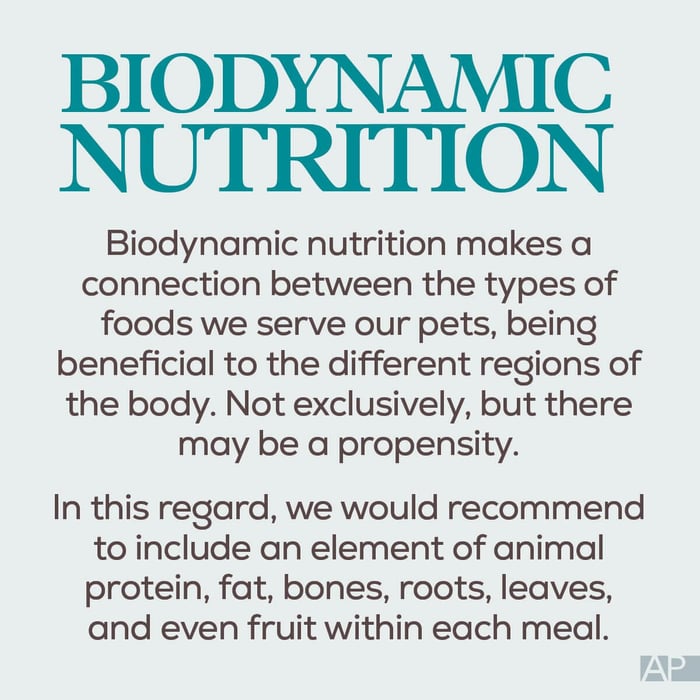
Following TCVM (Traditional Chinese Veterinary Medicine), Biodynamic Nutrition establishes a connection between the types of food we serve our pets and their beneficial effects on the different regions of the body. Not exclusively, but there may be a propensity. In this regard, we recommend including an element of animal protein, fat, bones, roots, leaves, and even fruit within each meal.
Biodynamic Nutrition
80/10/10 ratio
70-80% muscle meat and organs
10% bone content
10-20% veggies, fruit, and wholefoods
These ratios mirror the ancestral prey model diet, supplying natural, bioavailable nutrients without relying on synthetic vitamin supplements. Whole foods like organic vegetables, fruits, or superfoods in small amounts, like kale, spinach, kelp, or apples.
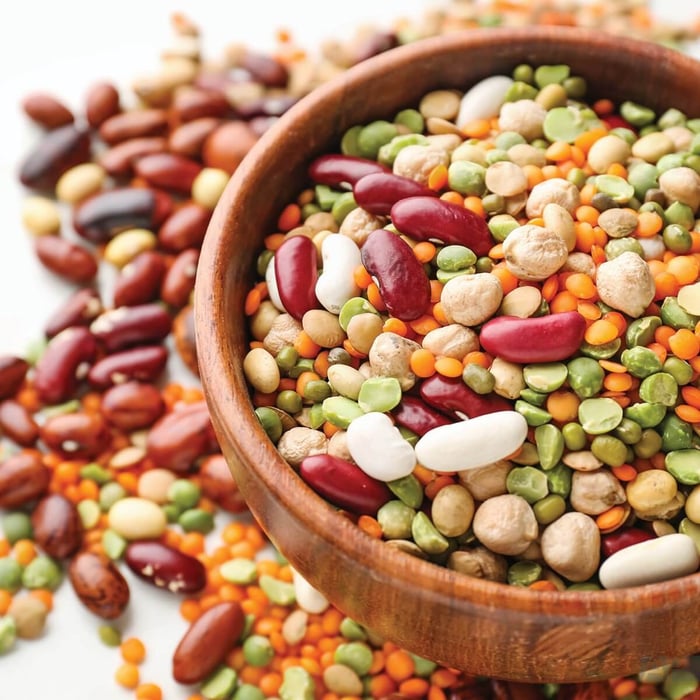
What’s Wrong With Most Pet Foods? The Carb Problem
Most commercial pet foods are packed with 30% to 60% carbohydrates. These plant-based ingredients are cheaper than whole meats and organs. Brands market these formulas as “grain-free” but replace grains with carb-heavy legumes or potatoes. If they are listed in the first 3-5 ingredients, they are filler-focused recipes. Excessive carbs aren’t just unnecessary; they can contribute to obesity, diabetes, and chronic inflammation.

The Salt Divider Trick
Here’s an insider tip: On most pet food labels, salt is a dividing line. Ingredients listed after salt make up less than 1% of the total formula. Unfortunately, many brands sprinkle in trendy ingredients, such as turmeric, blueberries, and flaxseed oil, just after the salt to make the label look healthier without adding meaningful nutrition. If your pet’s “superfoods” show up after salt? You’re likely paying for marketing, not health benefits.
Ingredient Splitting: A Clever Deception
Watch out for ingredient splitting, it's where brands list variations of the same ingredient separately to disguise its dominance in the formula.
Example:
“Chicken meal”
“Chicken by-product meal”
“Pea protein”
“Pea fiber”
Individually, these ingredients might not top the list, but combined, they often outweigh meat content. Real pet food brands don’t rely on these tactics. They use whole, clearly listed ingredients.
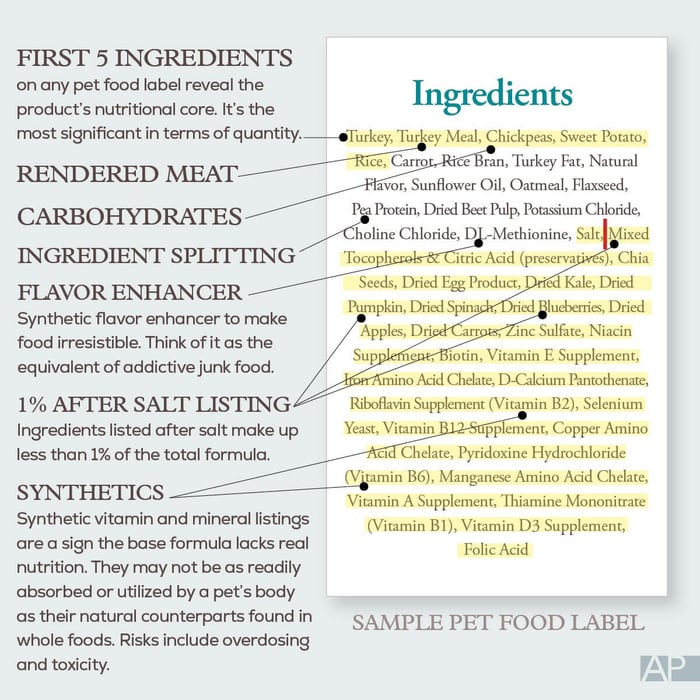
What to Avoid Completely
Rendered Meat Labeled as “Meal” or “By-Product Meal”
When reading pet food labels, avoid vague terms like “meat meal,” “poultry,” or “animal fat.” These are rendered ingredients from various animal tissues that involve cooking the fat, often from pork, beef, or poultry, until it melts and separates from other tissues. It’s a concentrated protein source created by cooking down raw materials, including slaughterhouse waste, spoiled meat, and even dead animals, until the fat is rendered out. It’s a source of low-quality ingredients, potentially contaminated or containing diseased animal tissue, which raises concerns about the quality of nutrients. Rendered meat ingredients in pet food are often listed as “meal” or “by-product meal” followed by the animal source.
Cheap Junk Fillers
Starches or legumes listed in the first five ingredients are typically found in weighty, carb-heavy diets. Peas, lentils, potatoes, tapioca, oatmeal, corn, and rice are all inexpensive filler ingredients that dilute protein levels and add unnecessary bulk to a diet. They are problematic ingredients because they are not appropriate for dogs (especially cats). They have a hard time breaking down carbohydrates; their pancreas must work harder to process starches, which puts strain on their metabolic systems, creates systemic inflammation, and weakens their immunity, paving the way for disease.
Synthetic Flavor Enhancers
“Natural Flavors” or “Artificial Flavors” and “Animal Digest” (often MSG-type flavor enhancers). Pet food companies often exploit this by adding synthetic flavor enhancers, also known as palatants, to make certain foods irresistible. Think of it as the equivalent of addictive junk food, such as Doritos.
Synthetics: Vitamins, Premix, and Blend Terms
Synthetic vitamin packs are high on the list (a sign the base formula lacks real nutrition). Real whole foods (like chicken, beef, spinach, or butternut squash) DO NOT list individual vitamins or minerals as separate ingredients on pet food labels! Their nutrients are naturally occurring, not isolated or added in.* If they are listed in the ingredients, they are almost always synthetic. Synthetics are often added to recipes because nutrients have been compromised. Lab-made vitamin and mineral packs are commonly added to pet food because the intense processing depletes natural nutrients. When natural ingredients are replaced by cheaper fillers or over-processed at high pressures and temperatures, essential amino acids, vitamins, and minerals are lost, forcing manufacturers to add synthetic replacements to meet basic nutritional standards. Seeing a list of added synthetics often signals that the base recipe lacks real, bioavailable nutrition.
*Quantifiers
Behind the Label: What Your Pet’s Food Isn’t Telling You. Perfect example is quantifiers— highlighting certain attributes of an ingredient like “organic vitamin E” or “grassfed beef,” companies are not allowed to simply add descriptive terms like “organic”, “grassfed”, “wild-caught”, or type of ingredient such as “Pink Himalayan Salt” directly within the basic ingredient list. Instead, they need to adhere to specific regulations set by the FDA for making such claims.
Allprovide Holistic Pet Food does list vitamin E supplement on our packages, but it's completely organic. Our food is processed frozen— vitamin E depletes when frozen. We add extra vitamin E oil, the food version, to make sure your pet gets enough of this important vitamin.
The best course of action, if in question, is to directly ask the pet food manufacturer if vitamin blends and listings are organic. Sneaky tactics include proprietary blends which make it difficult to identify or disclose the presence of synthetic ingredients.
Look for Transparency and Simplicity
High-quality pet food labels should read like a recipe, not a science experiment. If it’s not identifiable or you can’t pronounce it, that signals a poor-quality diet. If your current pet food ingredient list doesn’t offer this level of clarity, it’s time to reconsider what’s in your pet’s bowl.
"Real food doesn’t have ingredients, real food IS ingredients." ~ Jamie Oliver.
Summary
The Takeaway: Feed Like Nature Intended
Behind the Label: What Your Pet’s Food Isn’t Telling You. This is your backstage pass to decoding pet food labels, where flashy marketing fades and real nutrition takes center stage. Ingredient order isn’t random; it’s legally based on weight before cooking, making those first five ingredients the nutritional core of your pet’s meal. Named animal proteins, nutrient-rich organs, and species-appropriate percentage ratios should dominate the list, not carb-heavy fillers like peas, potatoes, or rice masquerading as health food. If mystery meats, vague terms, or ingredient splitting sneak into those early slots, you’re looking at clever deception—not quality nutrition.
By understanding the power of ingredient order, you’ll know whether you’re buying nourishment or noise. Real food labels read like a recipe, not a science experiment. Whole, recognizable ingredients fuel your pet’s health the way nature intended. Real food doesn’t need decoding because real food is simple, created by Mother Nature herself.




